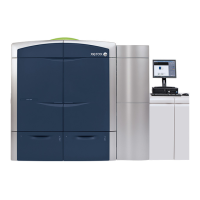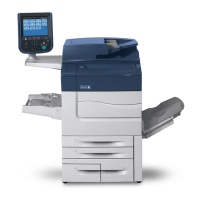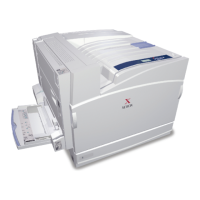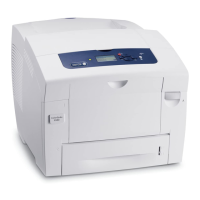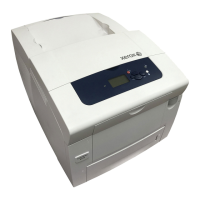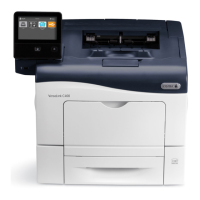c. Click on the left of Connectivity and on the left of Protocols to display the items
in the folder.
2. Click IPP.
3. Type the port number you want the printer to use in the Add Port Number.
4. For Administrator Mode, select Enabled to allow only one specific user to control or
delete any print job.
5. Select the Enable check box to enable DNS.
6. Set the Connection Time-Out.
Default is 60 seconds.
7. Select Apply.
Port 9100 - Raw TCP/IP Printing
Raw TCP/IP is a printing method used to open a TCP socket-level connection over Port
9100, to stream a print-ready file to the printer’s input buffer. It then closes the
connection either after sensing an End of Job character in the PDL or after expiration
of a preset time-out value. Port 9100 does not require an LPR request from the computer
or the use of an LPD running on the printer. Port 9100 is selected in Windows as the
Standard TCP/IP port. This section describes how to configure the settings for Port 9100.
Note
Enable the Port 9100 port when using HP-UX.
1. Perform the following to access the network protocol settings.
a. Connect to CentreWare.
b. Click the Properties tab.
c. Click on the left of Connectivity and on the left of Protocols to display the items
in the folder.
2. Click Port 9100.
3. Next to TCP-MSS Mode, select Enabled if needed.
TCP-MSS settings are common for LPD and Port 9100.
4. If TCP-MSS mode is enabled, under IPv4, type the IP addresses for Subnet 1, 2 and
3.
5. Ensure that the TCP Port Number is set to 9100.
6. Set the End of Job Timeout to the desired number of seconds between 0 and 1800
before processing a job with an End of Job character. The default time is 300 seconds.
7. Select Apply.
LDAP
Lightweight Directory Access Protocol (LDAP) is a protocol used to process queries and
updates to an information directory, also known as an LDAP directory, stored on an
external server. LDAP directories are heavily optimized for read performance. Use this
page to define how the printer retrieves user information from an LDAP directory. This
section describes how to configure the server settings for the LDAP/LDAPS port.
3-13Xerox
®
Color J75 Press
System Administration Guide
Using CentreWare Internet Services

